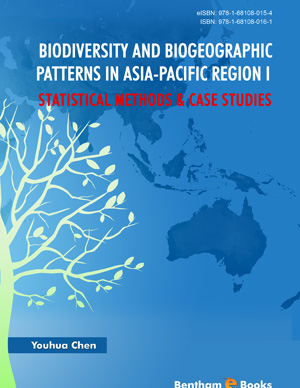Abstract
Species distribution is reflected by the observation of species individuals in different sites of an ecological domain. The distributional size and the range boundary of the species are measured through the counting of the presence or absence of the species across different sites. However, as mentioned in previous chapters 9 and 10 and here, when the individuals of species has been recorded with the geographic coordinates within some spatial ranges, one common ecological question that we would encounter would be, are the distribution of all the species individuals present some non-random patterns? That is, would the species tend to aggregately distribute in some limited areas across the whole ecological domain, while some areas are not favoured by the species and thus rarely have the occurrence of the individuals of species? Testing of distributional randomness could offer insights and address these ecological questions. In this chapter, I would present only some classical statistical methods for quantifying the randomness of spatial distribution of species. Readers interested into this subject should refer to books in the field of spatial statistics.
Keywords: Distribution and diversity, limited sampling, nearest neighbouring, quadrate-based versus spatial point-based randomness, Riley’s K statistic, spatial biodiversity patterns, spatial statistics.






















